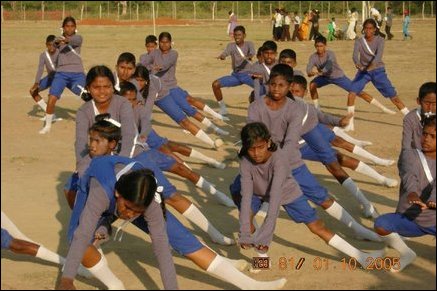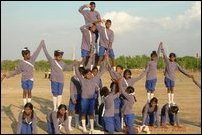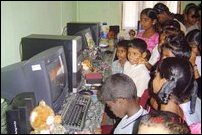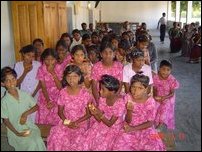White cane day in Vanni marks symbol of independence
[TamilNet, Saturday, 15 October 2005, 13:33 GMT]
A cultural festival including dance, drama, and music is scheduled to take place in Puthukkudiyiruppu Central School Hall on 19 October to celebrate the "White Cane" safety day marking the progress of visually impaired children and adults in the NorthEast. In 1963, United States Congress designated 15 October as the White Cane Saftey Day callling the people to observe the day with appropriate ceremonies and activities.
Although the history of white cane has origins after World War I, the first special White Cane Ordinance was passed in December 1930 in Peoria, Illinois. It granted blind pedestrians protections and the right-of-way while carrying a white cane. Organizers of the Vanni event said, "The four segements of the White Cane represent Determination, Motivation, Work ethics and Progress. Our aims in celebrating this day are to increase the awareness of all NorthEast residents of the handicaps faced and the potential of visually impaired, and to encourage all to assist them whenever possible on road walks and crossings." Iniya Valvu Illam ("Sweet Life" Home) in Vallipunam, Mullaitivu district currently houses 37 visually impaired and 43 hearing impaired children (44 boys and 36 girls). Originally the institution operated in Uduvil, Jaffna as Vaalvaham and Nuffield School in Kaithadi Jaffna. After the 1995 Sri Lanka Army (SLA) occupation of Jaffna, displaced disabled children were unable to attend school and to receive proper care. Iniya Valvu Illam was started on 19 September 1997 to attend to visually and hearing impaired children's needs. Braille and sign language techniques are being taught at the children's home, administrators said. Children in grade 1 to 11 attend Vallipunam Vidyalayam and those in Grades 12,13 attend Udayarkattu Maha Vidyalayam. Four visually impaired youths from Iniya Valvu Illam are currently enrolled in Jaffna Campus, according to organizers. Administrators of Iniya Valvu Illam said that as a unique home looking after the needy visually, and hearing impaired children, the Home depends on support from well-wishers. The administrators expressed their appreciation to local and expatriate donors who have been helping the Home to defray daily expenses and to help buy special equipment for the children.
External Links:
|










